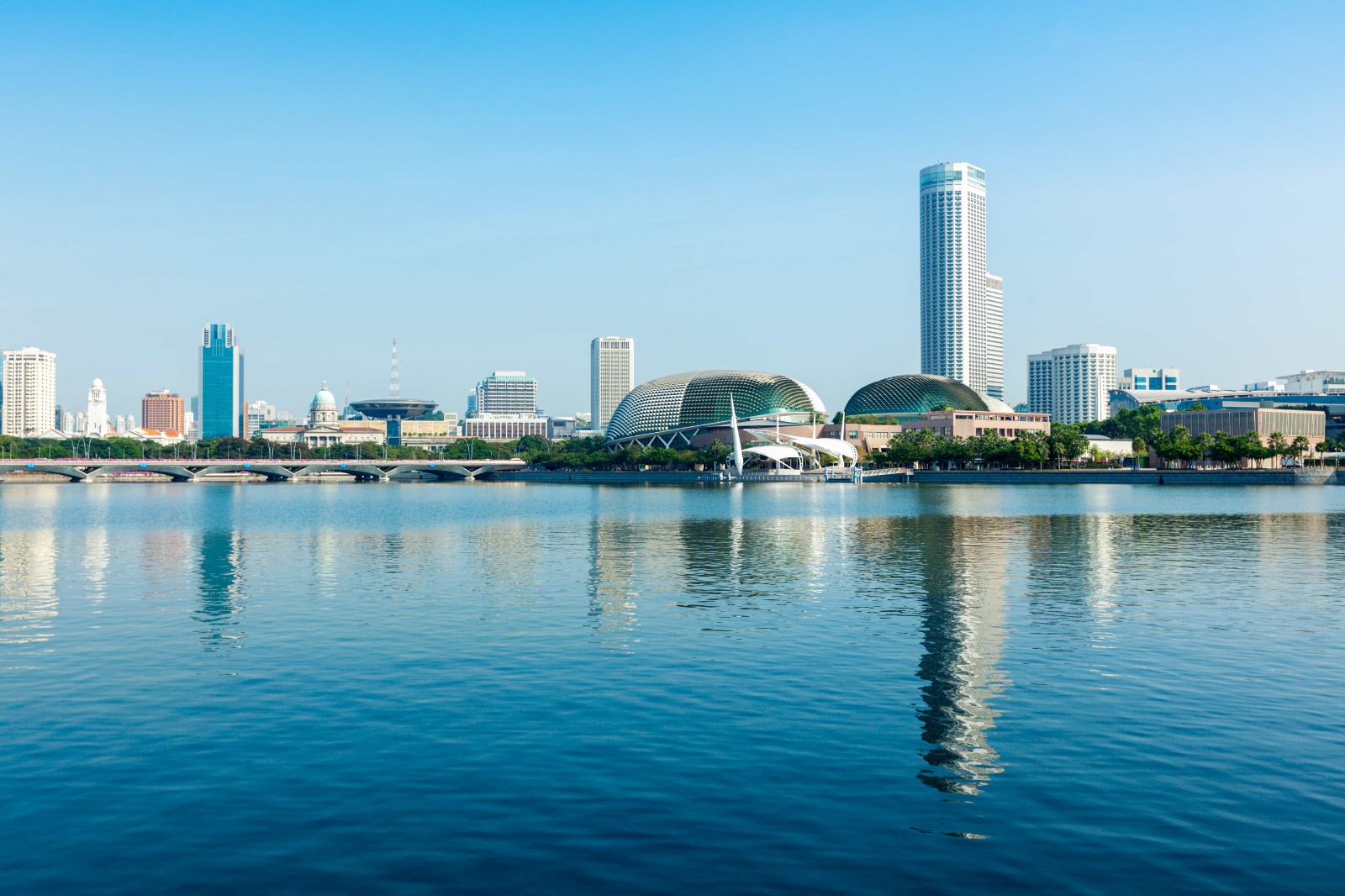Building a Future-Ready B2B Marketing Strategy for APAC
The Asia-Pacific (APAC) region is a vast, diverse and rapidly evolving marketplace. As B2B marketing managers, staying ahead of the curve requires more than just reacting to the latest trends—it’s about building a sustainable and scalable marketing strategy that can grow with the region’s dynamic shifts in technology, customer behaviour and market demands.
In this blog, we’ll explore the key elements that make up a future-ready B2B marketing strategy for APAC, focusing on the factors that will help you remain competitive, flexible and responsive to changes in this ever-evolving market.
Prioritise Localisation Over Globalisation
One of the biggest challenges in APAC B2B marketing is the region’s sheer diversity. From Japan to India, Southeast Asia to Australia, each market has its own unique culture, business practices, regulatory environment and customer behaviour. A one-size-fits-all approach simply doesn’t work in APAC.
Strategy Tip:
Localisation is key. Tailor your marketing messages to resonate with local business cultures, languages and values.
Example:
In Japan, business decisions often follow a hierarchical structure and building personal relationships is important. Your marketing strategy should emphasise trust, consistency and long-term partnerships. In contrast, markets like India might respond better to messaging that highlights cost efficiency, scalability and value for money.
Localise your digital presence:
Websites, landing pages, email campaigns and social media content should reflect local languages and customer preferences. In markets like China, platforms such as WeChat or Weibo are more effective for engagement than Western social networks like LinkedIn or Facebook.
Embrace Data-Driven Decision Making
The power of data cannot be overstated, especially in a region like APAC where customer behaviours are continuously evolving. A future-ready marketing strategy relies on real-time insights, predictive analytics and personalisation to stay relevant and competitive.
Strategy Tip:
Leverage Big Data & Analytics: Use customer data to understand regional trends, pain points and preferences. This helps you segment your audience effectively and serve hyper-targeted content.
Example:
In Singapore, a technology company might use data analytics to understand how businesses are adopting cloud-based solutions, allowing them to create targeted content that speaks directly to this growing trend.
Personalise Marketing Efforts:
Personalisation is crucial in APAC. Through data-driven insights, you can tailor your messaging to different buyer personas, stages of the customer journey and regional needs. Use marketing automation tools to send customised messages and ensure timely follow-ups based on customer actions.
Predictive Analytics for Lead Scoring:
Implement predictive analytics to assess lead quality and forecast future customer behaviour. This helps you identify high-value leads earlier and focus resources on prospects with the highest conversion potential.
Leverage Technology and Automation for Scalability
The rapid growth of digital tools and marketing technologies has made it easier than ever to scale marketing efforts across multiple APAC markets. By integrating automation tools and leveraging emerging technologies, B2B marketers can streamline operations and create more impactful campaigns.
Strategy Tip:
Invest in Marketing Automation: With the right tools, you can automate lead nurturing, email marketing, social media scheduling and content distribution. Marketing automation frees up resources for more strategic tasks while ensuring consistent engagement with prospects.
Example:
A B2B company in Hong Kong can use automation to send region-specific emails based on the recipient’s behaviour, local language preference and the stage of their sales funnel, while tracking engagement for further follow-up.
AI & Machine Learning:
Artificial Intelligence (AI) and machine learning are transforming how we engage with customers. These technologies can help predict customer behaviours, deliver hyper-targeted content and optimise the customer experience at scale.
Example:
Using AI-driven chatbots on your website can help you provide instant support to customers across different time zones in APAC, improving lead conversion and customer satisfaction.
Invest in CRM Systems:
Centralise all customer data into a single Customer Relationship Management (CRM) system and ensure your sales and marketing teams are aligned. This gives you a 360-degree view of your prospects and helps tailor outreach across touchpoints.
Adopt Agile Marketing Practices
In a fast-paced, fluid market like APAC, being agile is more important than ever. The region is prone to rapid technological shifts, geopolitical events and evolving customer needs. An agile marketing strategy allows you to quickly adapt to changes without losing momentum.
Strategy Tip:
Implement Agile Methodologies: Break down your marketing campaigns into smaller, manageable sprints. This approach helps you stay flexible and make adjustments on the fly. Instead of launching one large, monolithic campaign, develop iterative campaigns that can be quickly adjusted based on feedback and performance data.
Example:
If your initial campaign targeting corporate buyers in Singapore isn’t getting the desired results, you can pivot mid-stream by focusing on small to medium enterprises (SMEs) or adjusting the messaging to better align with pain points.
Constant Testing and Optimisation:
Use A/B testing and performance analytics to fine-tune your campaigns, landing pages and ads. Continually assess what works and optimise your strategy based on real-time data to ensure you are achieving the best possible outcomes.
Sustainability as a Core Pillar
Sustainability is becoming increasingly important across APAC markets. Governments, industries and consumers alike are emphasising environmental and social responsibility. A future-ready B2B marketing strategy in APAC should integrate sustainability as a core element to meet the growing demand for environmentally conscious products and solutions.
Strategy Tip:
Showcase Your Sustainability Efforts: Highlight your company’s sustainability initiatives in your marketing efforts. Whether it’s through eco-friendly product innovations, energy-efficient operations, or corporate social responsibility (CSR) programmes, communicating your commitment to sustainability can build brand trust and loyalty in environmentally-conscious markets.
Example:
A logistics company in Singapore can highlight its carbon-reduction initiatives and use green technology in its fleet, helping to differentiate itself in an increasingly competitive market.
Align with Local Regulations:
As sustainability regulations and green policies continue to evolve, staying compliant and aligning with local laws is crucial. Understand the regulatory frameworks in each APAC country and tailor your marketing messages to reflect your adherence to these standards.
Nurture Relationships and Build Trust
In APAC, business relationships often take precedence over transactional marketing. Trust-building, networking and long-term relationship nurturing are key to successful B2B marketing in the region. It’s not just about making the sale; it’s about positioning your company as a trusted partner.
Strategy Tip:
Account-Based Marketing (ABM): Focus on high-value accounts and adopt an ABM approach to nurture relationships over the long term. Create highly personalised campaigns that speak directly to the unique needs and challenges of each account.
Example:
For a B2B company offering manufacturing solutions in Thailand, an ABM approach would involve tailored campaigns, product demos and consultations with key decision-makers, creating a seamless and personalised journey for the prospect.
Engage with Influencers and Industry Leaders:
Partner with influential voices in your industry to co-host webinars, participate in panel discussions and create content that aligns with your expertise. Influencers and respected figures can act as a bridge to new clients and enhance your credibility.
Community Engagement:
Attend or sponsor industry events, webinars and conferences to build brand awareness and relationships. Given the importance of face-to-face interaction in many APAC cultures, hybrid events that blend digital and in-person interactions can help maintain long-term engagement.
Measure, Optimise and Scale
Finally, no strategy is complete without a strong focus on measurement and optimisation. To build a future-ready B2B marketing strategy, you must continuously track your performance, adjust your approach and scale what works.
Strategy Tip:
Use Key Performance Indicators (KPIs): Define clear KPIs such as lead conversion rates, website traffic, cost-per-lead, customer acquisition cost (CAC) and return on investment (ROI). This data will help you assess the effectiveness of your efforts and identify areas for improvement.
Continuous Learning and Feedback Loops:
Actively seek feedback from your customers, sales teams and stakeholders. Stay flexible and continuously refine your strategies based on insights. This feedback loop helps you stay in tune with shifting market trends and customer needs.
Building a future-ready B2B marketing strategy in the APAC region requires a deep understanding of the market’s complexity and an ability to adapt to its ever-changing demands. By embracing localisation, data-driven insights, agility, sustainability and personalisation, B2B marketing managers can create sustainable, scalable marketing campaigns that thrive in this diverse and dynamic region.
In the end, future-ready marketing in APAC is about being adaptive, strategic and innovative. By staying ahead of the curve, embracing new technologies and building lasting relationships, B2B companies can achieve long-term success and growth in one of the world’s most exciting markets.













